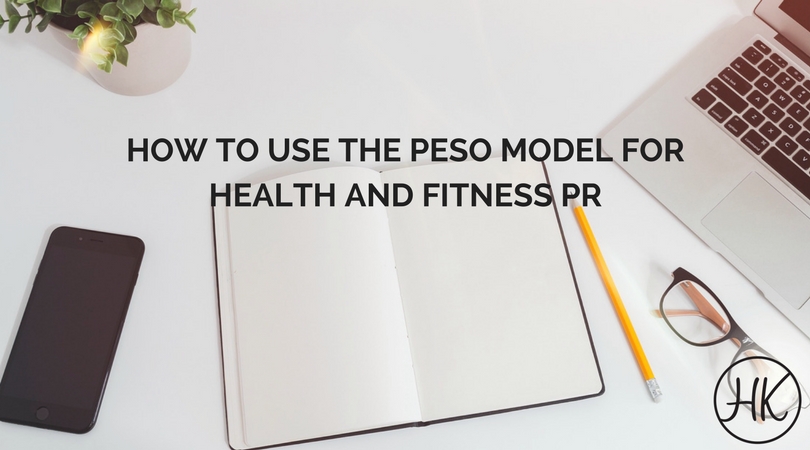
A stand-alone social media campaign or email blast may seem effective on the surface, but if you’re after long-term success you need a different approach. These one-shot health and fitness PR tactics will not win you the game.
You need a strategy that ensures all your digital marketing tactics are aligned. When your efforts are complementary, you can start building a reputation as a leader in your field. Your communications efforts will start yielding real business results.
Enter the PESO model.
Definition of the PESO Model
The PESO model integrates paid, earned, shared, and owned media types. Gini Dietrich, the creator of the model, says:
“When the PESO model is working at its best, it can help you establish authority.
Authority leads to thought leadership.
Thought leadership leads to credibility and expertise.
Others see you as an expert … even your competitors.”
Here’s a great visual of the PESO model and the affiliated media types.
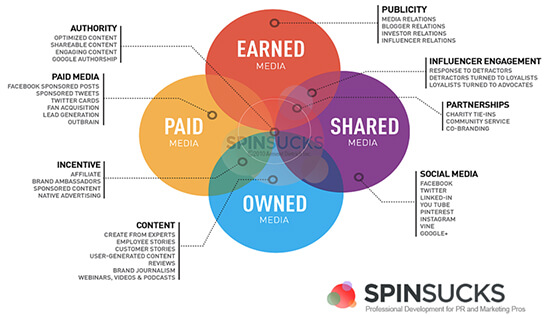
So, what does this mean for you? It means that when used consistently, the PESO model can bring you real business results.
I’m going to walk through how you can start implementing the model. Lululemon will be our mini-case study, but the PESO model can be applied to any health and wellness business—health coaching, fitness studios, clinics, retail, you name it.
Paid Media
Paid media includes digital marketing avenues such as social media ads, email marketing campaigns, and sponsored posts. The common thread is you pay to publish and promote your content.
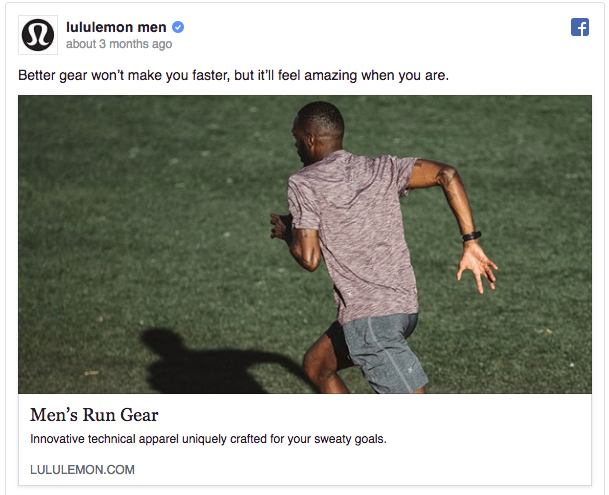
Earned Media
Earned media takes the form of traditional media relations. It’s when you get your brand into a newspaper, on a podcast, or written about by a popular blog.
For instance, check out these three articles about Lululemon published on Well+Good.
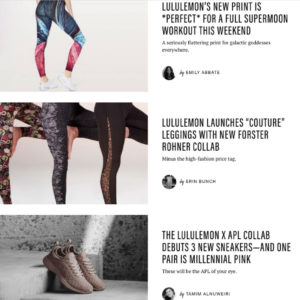
Shared Media
Shared media, or social, centers on publishing quality posts on social media channels. It also involves actually engaging with your following, not just hitting “post” and walking away. This is where you showcase your business in a visible manner. So, take care to avoid typos, use correct grammar, and keep a consistent voice.
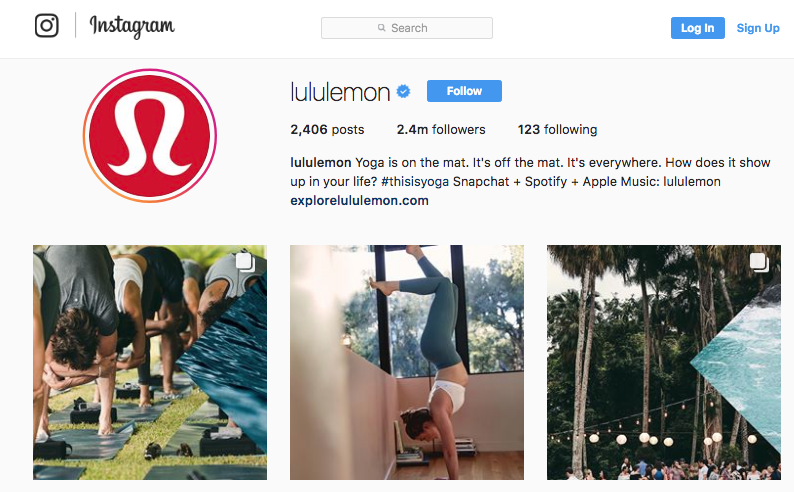 Owned Media
Owned Media
Owned media is your foundation and where you have the most control over the messaging. This content needs to live on your website or blog.
If you post all your thoughts and advice on lengthy Instagram posts, Facebook Notes, or Medium, you’re essentially housing your content on rented land. If you still need to be convinced, read this article about “digital sharecropping.”
For example, a section of Lululemon’s website is dedicated to community-focused content. While some posts feature products, others highlight ambassadors, active lifestyle, and healthy eating.
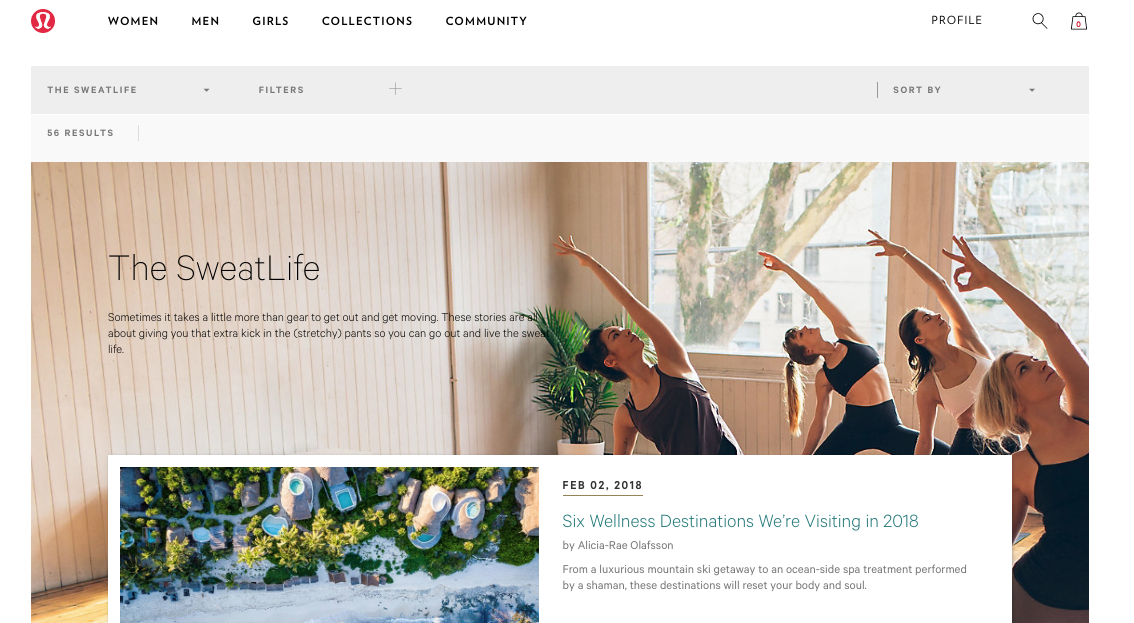
Bringing the Pieces of the PESO Model Together
As you’re thinking about your PESO model, keep your target customer or client in mind. Their needs, preferences, and problems should drive all your content development. Steer away from a self-promotional tone in favor of a helpful, educational, or entertaining approach.
What prevents your ideal client from purchasing your product or service? Create integrated content to address those barriers.
Need an example? Lululemon shared a Facebook post about hamstring openers (a problem) that linked to a yoga sequence housed on its blog (a solution). This is integrated content at work.
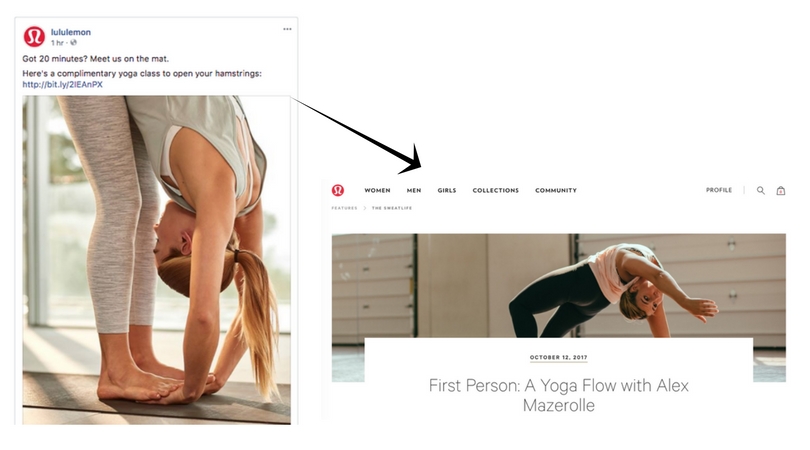
Keep Your Eyes Peeled for PESO
Start looking closely at the brands you admire and compete with. It’s likely the ones that stand out, have a loyal following, and are considered experts in their field, are using an integrated communications approach.
Drop a comment if you have any questions about the PESO model.


